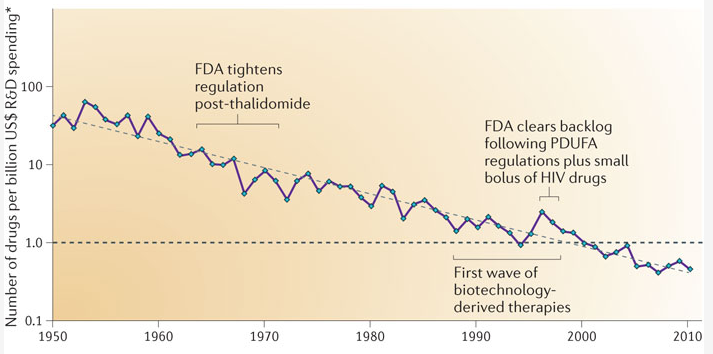My car broke down and repairs cost more than it’s worth. Time for a different one. I’ll likely get a Honda Civic or Toyota Prius. Do fuel savings from Prius justify price premium? No. It would take at least 8 years to reach breakeven between the two at current gas prices. I may buy a Prius anyway, but for other reasons.
Here’s the calculation (I ignore resale value, since I tend to drive cars to end of life).
I will buy used. I found these two options:
2012 Prius Two 51city/48highway $18,600 40k miles (Edmunds.com)
2012 Honda Civic: 29city/41highway $15,000 39k miles (Edmunds.com)
I probably drive 75% of time in city and 25% of time on highway. This gives following mpg:
Prius = 0.75*51 + 0.25*48 ~= 50.25 mpg
Civic = 0.75*29 + 0.25*41 ~= 32 mpg
I averaged ~10,000 miles/year in the broke-down car. Each car would consume following fuel:
Prius = (10,000 miles/year) / 50.25 mpg = 199 gallons
Civic = (10,000 miles/year) / 32 mpg = 313 gallons
In California, taxes and fees would add ~10% to list price, giving following out-the-door price:
Prius = $18,600 * 1.1 ~= $20,500
Civic = $15,000 * 1.1 = $16,500
The premium for a Prius is $20,500 – $16,500 = $4,000. A Prius consumes 313 – 199 = 114 gallons less gas per year.
With fuel price (F) and years driven (Y), we can calculate the breakeven point:
$4,000 = 114 gallons * F * Y
Y = $4,000/(114 * F)
If F = $4.20/gallon (current price), Y = 8.4 years.
If F=$7/gallon, Y = 5 years
I consider 5 years the acceptable payback period to buy the technology based on fuel savings alone. As you can see, gas prices would have to increase to $7/gallon to make that happen.
Considered another way, what is the likely premium paid to own a Prius over 5 years over a Civic:
Premium = $4,000 – 114 gallons * $4.20/gallon * 5 = $1,600
There are a lot of reasons to buy a Prius, but for me money saved on fuel is not one of them.


